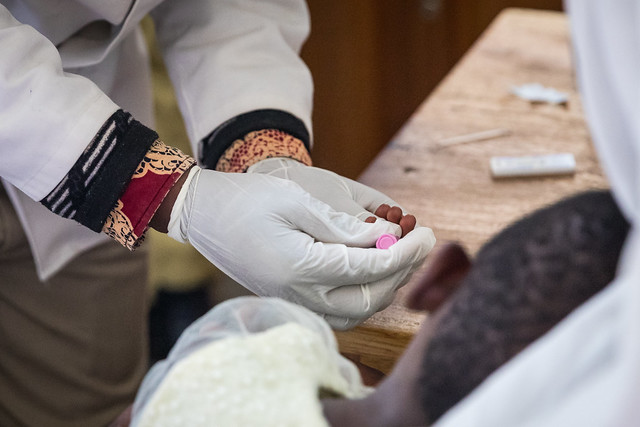Drug-resistant bacteria found in hospitals cause thousands of deaths worldwide each year. But a study of such superbugs in a Zambian hospital offers hope that they remain sensitive to more antibiotic types than bacteria found in better-resourced hospitals in Europe or North America.
Hospital staff often unwittingly transmit bacteria between patients. Researchers from the University of Zambia, the Ministry of Health and the Lusaka Apex Medical University collected nasal and hand swabs from 140 healthcare workers at the University Teaching Hospital in Lusaka during May and July 2017, and tested the samples for the presence of bacteria.
Of the doctors, nurses and laboratory staff that participated in the study, 17.1% tested positive for Staphylococcus aureus, one of the most common bacterial causes of hospital-acquired infections. Worse, 5.7% of the staff samples contained S. aurus strains that were resistant to common antibiotics, known as methicillin-resistant staphylococcus aureus, or MRSA. Bacteria of this kind are estimated to kill 20,000 patients every year in the United States of America alone.
But the study offers a ray of hope for low-resource countries. While the MRSA identified in the study was resistant to commonly used antibiotics like penicillin and tetracycline, it remained sensitive to antibiotics that aren’t often used in the hospital like amikacin and teicoplanin. This makes the MRSA found in Zambia easier to fight than MRSA in the USA, say, where the use of a wider range of antibiotics has resulted in resistance against more antibiotic types.
The findings mirrors the patterns of resistance discovered in other low-resource parts of the world like Nepal, the researchers write in their paper published in Scientific African’s September issue. “This indicates that these antibiotics can be used as treatment options for MRSA infections,” they write.
The proportion of staff at the Zambian hospital carrying MRSA was in line with international rates. A 2014 systematic review published in BMC Infectious Diseases found that on average 4% of healthcare workers in Europe carried MRSA, and 6.6% in the USA. The data on carriage rates in developing countries is patchy, but the prevalence in the Zambian study is lower than the 15.6% carriage rate of MRSA recorded by a study of nasal swabs from 379 hospital staff in Tanzania’s largest city Dar es Salaam.
However, Godwin Chakolwa, who led the Zambian team, worries his data may underestimate the carriage rates at the hospital. He told Scientific African Magazine that many health staff refused to take part in the study, leading to a small sample size that might not be representative of the staff at large. He said this reluctance to take part is par for the course in his country, where many people distrust scientists. “They thought that there was some deception in what we were doing. They did not believe that we would not use their information for [something] else,” he said.
Chakolwa said there are many ways that the hospital, which is Zambia’s largest referral hospital, could reduce the infection risk. One of the best ways of preventing MRSA from spreading in a hospital setting is through stringent infection control, from simple things like handwashing to high-tech cleaning of hospital wards and medical tools. Hospitals should organise seminars to teach healthcare workers about infection prevention as a way to protect patients, he said.
Studies like this are valuable as they contribute to a better understanding of antibiotic resistance in Southern Africa, says Adrian Brink, head of the Division of Medical Microbiology at the University of Cape Town in South Africa. “Although this was not investigated in the current study, carriage has been identified as an important risk factor for infection for example in patients undergoing surgery,” he said. Brink was not involved in the research.
Brink said the study should encourage practices such as improved hand hygiene and infection control in low-resource environments in Africa. But Chokolwa said resource shortages extend beyond the hospital to research conditions in Zambia. The study took a year to complete, instead of six months had all the requisite funding and equipment been available. “The problem in our country is that there is a lot of apathy; not just from the people who did not want to participate in this study, but also quite possibly [from those who] can fund the research. Most people don’t value research that much,” he said.
Sibusiso Biyela is a freelance science writer based in Johannesburg, South Africa
References
Godwin Chakolwa et. al. ‘Carriage rate and antimicrobial resistance profiles of Staphylococcus aureus among healthcare workers at a large tertiary referral hospital in Lusaka, Zambia’ Scientific African Volume 5 (2019)
Image credit: USAID in Africa/flickr
